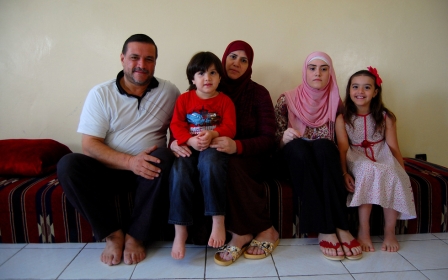Syrian army thrusts east to break siege of Deir Ezzor city

With a sudden lunge through militant lines, the Syrian military and its allies on Monday came to within three kilometres of relieving the Euphrates city of Deir Ezzor, where the Islamic State (IS) group has besieged an army garrison and 93,000 civilians for years.
The advance on the eastern city marks another stinging setback for the once-triumphant IS, fast retreating in both Iraq and Syria as its self-declared caliphate crumbles.
Syrian troops were rapidly approaching the city on Monday, reaching a point three kilometres from their comrades in the city, state television reported.
Deir Ezzor’s provincial governor said on Sunday he expected the army to reach the city by Tuesday night. A military media unit run by the government's ally Hezbollah said the advancing forces were heading to the besieged garrison's camp on the city outskirts.
"Islamic State is in confusion. There is no leadership or centralised control," said a commander in the military alliance supporting Syrian President Bashar al-Assad.
Hemmed in on all sides, IS is falling back on a last Euphrates stronghold downstream of Deir Ezzor in the towns of al-Mayadin and al-Bukamal near the border with Iraq.
But as it has lost its core territory - defeated in Iraq's Mosul and yielding street after street in its de facto Syrian capital of Raqqa - the ultra-hardline group has still been able to launch attacks in the West and maintain a threat in other centres such as Libya.
In IS-encircled Deir Ezzor, news of the army's approach prompted people to take to the streets to celebrate, governor Mohammed Ibrahim Samra said by phone.
The city has been cut off since 2013, after rebel groups rose up against Assad during the first flush of Syria's six-year war. IS then overran rebel positions and surrounded the army's enclave in the city in 2014.
It was a major prize. Deir Ezzor is the centre of Syria's oil industry, a source of wealth to the group and a serious loss to Damascus. As the army has pushed east in recent months, oil and gas fields have once more fallen to the government.
Islamic State militants have stepped up efforts this year to seize the enclave before the army could arrive. In January, they managed to sever it from the military airbase in the city and take over a nearby hill, further straining its links to the outside.
During the long siege, the city has been supplied via high-altitude air drops. The United Nations said in August it estimated there were 93,000 civilians in the government's Deir Ezzor pocket, where conditions were "extremely difficult".
"Despite all this and despite the shelling and injured, things are running in the city. The institutions are running, the bakeries. Water is also pumped twice a week to our residents, aid is distributed daily," governor Samra said.
Rapid advance
For Assad, the weekend's lightning advance caps months of steady progress after government forces turned from their victory over rebels in Aleppo last December to push eastwards against IS.
"The army has been advancing in a rapid and calculated way from all directions," a Syrian military source said, referring to the months-long campaign across the desert.
Aided by Russian jets and an alliance of Shia militias backed by Iran, including Lebanon's Hezbollah, the Syrian army has captured swathes of the central and eastern deserts in parallel offensives from Palmyra and al-Resafa.
Those offensives have accelerated since linking up last month, enclosing two big IS pockets and overrunning all but a small portion of one of them, near the town of al-Salamiya.
Siege conditions
Estimates of the number of people living in Deir Ezzor city vary, but all agree the population has shrunk dramatically from its pre-war figure of 300,000.
The United Nations said earlier this year over 90,000 people remained in areas under government control.
The Syrian Observatory for Human Rights puts the figure at around 150,000 and says over 10,000 people remain in IS-held parts of the city.
Experts say around 7,000 Syrian soldiers are also trapped inside.
The siege has created dire humanitarian conditions, with shortages of food, soaring prices and limited access to medicine and health care.
This article is available in French on Middle East Eye French edition.
Middle East Eye propose une couverture et une analyse indépendantes et incomparables du Moyen-Orient, de l’Afrique du Nord et d’autres régions du monde. Pour en savoir plus sur la reprise de ce contenu et les frais qui s’appliquent, veuillez remplir ce formulaire [en anglais]. Pour en savoir plus sur MEE, cliquez ici [en anglais].





